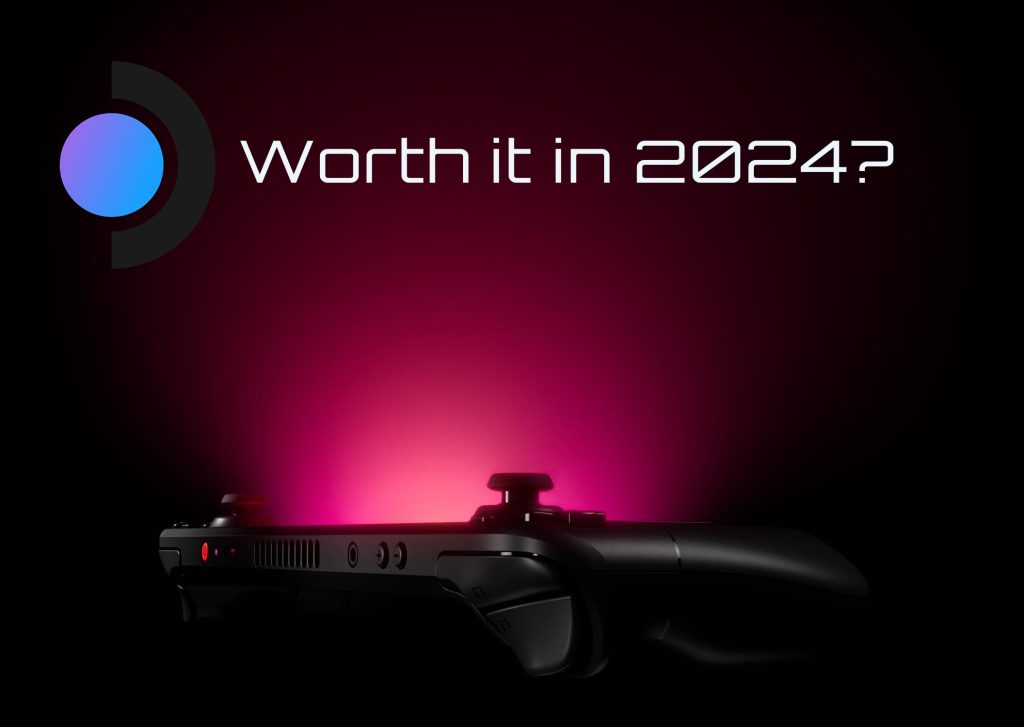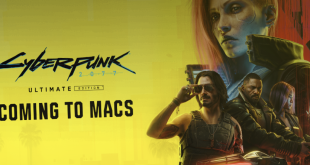The Steam Deck is a little old at this point, having been out for two years already in LCD form, and the newer OLED model is coming up to one-year old. So let’s answer the question – is the Steam Deck still worth it in 2024?
There is currently a lineup of three different options you can go for as far as the Steam Deck is concerned. Valve still sells the older LCD model, priced at £349 with a 256GB SSD, something that you would surely need to upgrade after purchase, as 256GB is a very limited amount of storage considering the sizes of modern games. If you spend a bit more, you can make the jump to the Steam Deck OLED at 512GB at £479 (512GB), and the 1TB version sits at £569.
While it might be tempting to save some money and go with the LCD version, I would wholeheartedly recommend making the jump to the OLED model. While it may seem on the surface that the display is the only major upgrade, there are plenty of tweaks with the OLED version that make it superior to the original model. The Steam Deck OLED isn’t as bulky and more comfortable to hold, the back paddle buttons have a bit more resistance to them, making accidental presses of the back buttons near impossible. The thumbsticks are improved to offer more grip, and even the speakers sound a bit nicer at higher volumes.
Under the hood, you’ll also find a bigger battery, capable of longer gaming sessions. The WiFi chip has been upgraded to WiFi 6E, which makes utilising cloud gaming services, like Nvidia’s GeForce Now, a much better experience, assuming you have a WiFi 6E-capable router. I have found that my download speeds are improved on the Steam Deck OLED compared to the original model, and playing AAA games via GeForce Now works a treat. During my recent playthrough of Black Myth: Wukong, I spent most of my time in the game on the Steam Deck, running at graphical settings that I would not be able to achieve with the game running natively, all at a solid 60FPS.
I don’t want to downplay how much of an upgrade the OLED screen is though. It still isn’t a super high resolution, but at 1280×800, it is more than good enough for the size of the display. The OLED screen is perfectly calibrated too, so colours pop a lot more, black levels are perfect and you can even switch on HDR for an extra boost in brightness. While at launch, the Steam Deck OLED had some issues with HDR, these have been ironed out at this stage. I’ve played quite a few HDR-supported games on my Steam Deck OLED and I have always been impressed by how bright the highlights get. I often bump the brightness down to around 75% with HDR on to avoid burning out my retinas. It holds up extremely well, even compared to my much more expensive OLED TV and gaming monitor. The jump from 60Hz to 90Hz doesn’t sound huge on paper, but as someone extremely accustomed to high frame rates, it was a very welcomed upgrade.
The Steam Deck LCD still benefits from all of Valve’s recent SteamOS updates, but I couldn’t imagine going from the OLED back down to the LCD model, and I do think the upgrades here are worth the money. You could buy the 256GB LCD model and a 1TB SSD for cheaper, but I wouldn’t underestimate how much better every game looks on an OLED screen. OLED technology is a true game changer.
So we’ve established that the Steam Deck OLED beats out the LCD model, but what about other gaming handhelds? Well, despite having better specs, devices like the ROG Ally and Legion Go rely on Windows, and well, Microsoft has been very slow to offer any kind of handheld-optimised UI. These updates are supposed to be on the way, but for now, Windows on a handheld just isn’t a great experience.
SteamOS is where the Deck truly shines. When Valve first attempted to unleash SteamOS on the world back in 2015, the selection of playable games was so minimal that barely anybody bothered with it. Now, thanks to Proton, any game that can run on Windows can also run on SteamOS (Linux), without any tinkering required from the user. That means the Steam Deck offers a much more robust, console-like experience, with all of the bloat of the Windows OS removed. The UI is snappy and easy to navigate, and if you ever need to do some real PC stuff, a desktop mode is available at the press of a button and it is all easily navigable thanks to the track pads, which are also placed perfectly to reach with your thumbs without having to shift your hands and adjust your grip on the system. If I didn’t need Windows for certain work apps, I would seriously consider switching my gaming PC over to SteamOS with how robust it is now, after two years of consistent updates from Valve.
At this point, there are thousands of Steam Deck Verified games, but there are also many that are untested. So far, every single unverified game I’ve tried on the Deck has run perfectly fine with no issues. For instance, both of the Prototype games are ‘unverified’, but I was running both at a flawless 60FPS without any tinkering. With that in mind, while Steam may only show you a handful of ‘verified’ games in your library, you should absolutely try out any unverified games you have – chances are, they will run perfectly fine. If you have issues, try changing the version of Proton the game launches with – this can easily be done by going to the game, hitting the Start button and going down to the Properties menu.
At this point, SteamOS has matured enough that there are very few pain points to be found. I’ve spent most of my gaming hours in the past couple of months on the Steam Deck, playing many titles that have been sitting in my library for years. The handheld formfactor lends itself well to many smaller games that I couldn’t bring myself to play on my main gaming desktop. Titles like Dave the Diver, Dredge, Dead Cells, Deep Rock Galactic: Survivor, Vampire Survivors, Balatro, Hades, Hyper Light Drifter and the classic Final Fantasy games have all got significant playtime out of me since picking up the Steam Deck, whereas before, most of these games were sitting dormant in my library as backlog fodder. If you have a massive Steam backlog like me, the Deck is a fantastic pick-up.
That isn’t to say that the Steam Deck can’t handle AAA titles though. I have Ghost of Tsushima: Director’s Cut running on the Deck at 60FPS, Sekiro: Shadows Die Twice also runs at a flawless 60FPS. If you drop down to 30FPS, then games like Spider-Man (2018), Elden Ring, Cyberpunk 2077, Hogwarts Legacy and Starfield also become great options. So far though, the most impressive AAA title I’ve had running on my Steam Deck has been Death Stranding: Director’s Cut. This game runs at 60FPS with high graphics settings and it is absolutely gorgeous in HDR on the OLED display. In most other cases with AAA games, I’m turning graphics down to low or medium to achieve good frame rates, but Death Stranding just offers an incredible amount of fidelity and performance.
Now I’m a bit averse to 30FPS, so I tend to skip some of the more intensive titles on my Deck. While I installed all of these games for testing, I am unlikely to ever seriously play Cyberpunk 2077 on my Steam Deck. However, GeForce Now can be a huge game changer here. With a GeForce Now Ultimate membership you get access to RTX 4080 powered servers, and thanks to the Deck’s 720p(ish) resolution, streaming these games with all of the eye-candy turned up is very easy on the network. I had great performance over a WiFi connection and didn’t experience any dropouts or issues with visual artefacts. It is a flawless experience and also keeps the Deck from getting hot or loud, so battery life tends to be very decent while streaming too.
When I say decent, I mean somewhere in the realm of three to four hours. Running any intense AAA game on the Deck natively will drop battery life to under 2 hours so you won’t get to play for very long without reaching for a cable. Streaming allows for better graphics and longer play sessions as long as you have the internet connection for it and obviously, newer WiFi 6 networking hardware will also do a better job.
When it comes to indie games, titles like Dredge and Dave the Diver both offer around 5 hours of playtime on a single charge, and thanks to the included charger that comes with the Steam Deck, juicing the system back up doesn't take very long at all.
I was a bit apprehensive about buying the Steam Deck so long after it initially released, but the experience has truly blown me away. I was concerned that SteamOS wouldn’t offer a rock-solid experience, I was worried that a lot of games wouldn’t run well, and I was worried that overall, I wouldn’t get as much use out of it as I would like. The Deck has proven me wrong on all of those points. It has changed the way I play PC games forever, to the point where I haven’t touched my Xbox or PS5 since picking it up. Thanks to Steam Cloud, all my saves transfer between my Deck and PC automatically and I have found myself spending more time playing games, as I can simply pick up the Deck and take it with me anywhere I go. It also has me playing a much wider variety of titles, including many games that have been gathering digital dust in my library for years. It has unlocked PC gaming for me in a way that I didn’t think was possible and that all comes down to the convenience of the form factor, combined with the pain-free experience that SteamOS provides out of the box.
So is the Steam Deck still worth the money in 2024? Absolutely. Unless you happen to hate handhelds for whatever reason, I can't recommend the system highly enough and until Windows becomes more handheld-friendly with a dedicated gaming-focused UI, I would take the Deck over any Windows-based alternative.
Discuss on our Facebook page, HERE.
KitGuru Says: Handheld gaming has always appealed to me, having grown up with a Game Boy Colour in the early 2000s, before graduating to the GBA, Nintendo DS and PSP. However, the advent of PC gaming handhelds has created a world of limitless possibilities, and I couldn't be happier about it.
 KitGuru KitGuru.net – Tech News | Hardware News | Hardware Reviews | IOS | Mobile | Gaming | Graphics Cards
KitGuru KitGuru.net – Tech News | Hardware News | Hardware Reviews | IOS | Mobile | Gaming | Graphics Cards



